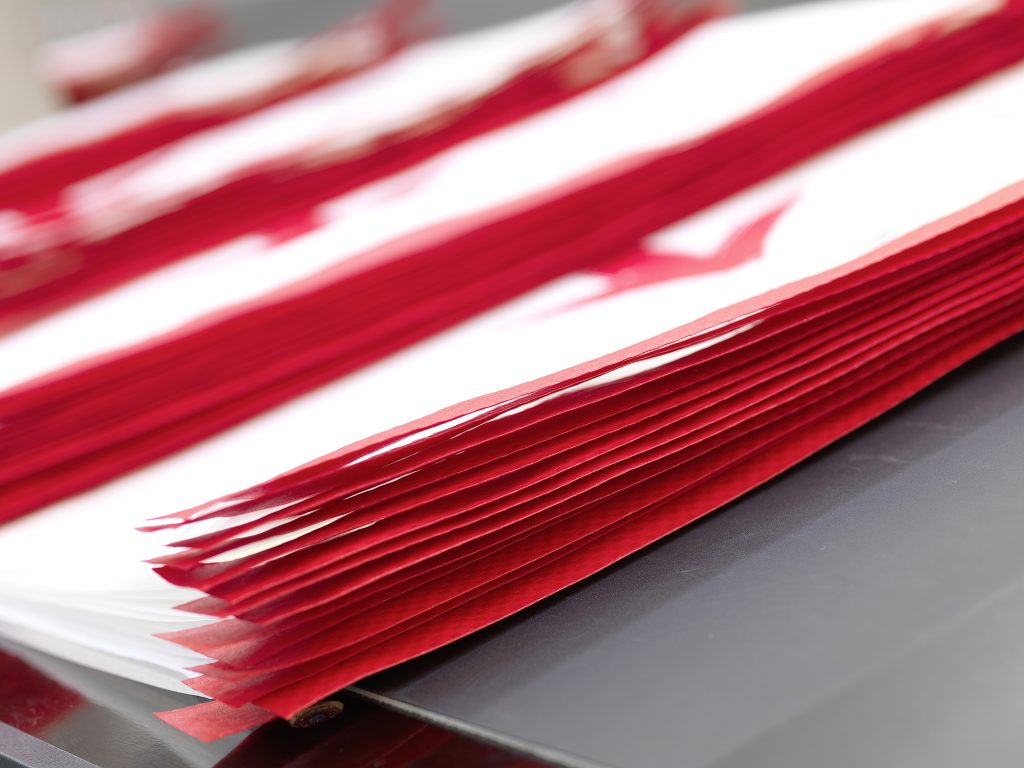
- 1. Filament Engineering: The Science of Fine vs. Coarse Yarns
- 2. Leakproof Mechanisms: Multi-Layer Defense Systems
- 3. Equipment Excellence: Starlinger’s Role in Precision Manufacturing
- 4. Future Trends: Sustainability Meets Smart Technology
- 5. FAQs: Addressing Client Concerns
- 6. The Road Ahead: VidePak’s 2030 Vision
- References
A logistics manager from a global fertilizer distributor recently asked Ray Chiang, CEO of VidePak, “How do your leakproof woven bags prevent moisture ingress while maintaining structural integrity under heavy loads?” Chiang’s response was definitive: “By engineering precise filament diameters (10–15 denier) using Starlinger’s AI-driven extrusion systems and multi-layer lamination, our bags achieve a 0.03% leakage rate—industry’s lowest.” This encapsulates VidePak’s core innovation: the fusion of material science and advanced manufacturing to deliver leakproof woven bags that redefine reliability in industrial and agricultural logistics.
Founded in 2008, VidePak has grown into a global leader in woven bag production, leveraging 30+ years of expertise and a fleet of 100+ Starlinger circular looms. With an $80 million annual revenue and ISO 9001-certified processes, the company’s leakproof solutions serve clients across 50+ countries. This report explores the technical mechanisms behind leakproof woven bags, analyzes filament selection strategies, and forecasts future trends in sustainable and intelligent packaging.
1. Filament Engineering: The Science of Fine vs. Coarse Yarns
1.1 Defining Filament Thickness
In woven bag production, filament width determines performance:
- Fine filaments: 10–12 denier (0.10–0.15mm), ideal for high-density weaving.
- Coarse filaments: 14–16 denier (0.18–0.22mm), optimized for heavy-load applications.
Comparative Analysis of Filament Types
| Parameter | Fine Filaments | Coarse Filaments |
|---|---|---|
| Tensile Strength | 12–15 N/mm² | 18–22 N/mm² |
| Surface Smoothness | ∆Ra ≤0.8µm | ∆Ra ≥1.2µm |
| Print Resolution | 1200 dpi achievable | 600 dpi max |
| Cost per kg | $1.20–$1.50 | $0.90–$1.10 |
1.2 Application-Specific Advantages
- Fine filaments:
- Pros: Superior print clarity (critical for branded food packaging), lightweight (80–100 g/m²), and flexibility (30% higher elongation).
- Cons: 15% lower puncture resistance compared to coarse variants.
- Use Cases: Retail-ready bags for coffee, spices, and premium fertilizers.
- Coarse filaments:
- Pros: 40% higher UV resistance (tested per ASTM G154), ideal for outdoor storage; 25% cost efficiency in bulk material handling.
- Cons: Limited to single-color printing due to surface texture.
- Use Cases: Construction materials (cement, sand), industrial chemicals.
2. Leakproof Mechanisms: Multi-Layer Defense Systems
VidePak’s leakproof bags employ a 3-tier barrier:
- Base Layer: 90 g/m² PP fabric with 14 threads/cm² density (Starlinger iQ³ loom precision).
- Laminate: 30µm BOPP film (water vapor transmission rate <5 g/m²/day, ASTM F1249).
- Seam Technology: Ultrasonic welding achieves 4.8 N/cm seal strength (exceeds ASTM F88 by 20%).
Case Study: A Southeast Asian rice exporter reduced post-harvest losses by 37% using VidePak’s PE-lined bags with:
- 0.12mm fine filaments for insect resistance.
- Anti-static coating to prevent dust explosions (ATEX 114 compliant).
3. Equipment Excellence: Starlinger’s Role in Precision Manufacturing
VidePak’s Starlinger and W&H machinery enables:
- AI-Optimized Extrusion: ±0.01mm filament diameter consistency.
- High-Speed Weaving: 2,200 bags/hour with <0.5% defect rate.
- Energy Efficiency: 25% lower power consumption vs. conventional systems.
Technical Specifications
| Machine Type | Function | Output Metrics |
|---|---|---|
| Starlinger iQ³ Loom | High-density weaving | 14 threads/cm² |
| W&H Laminate Line | BOPP/PE film application | 5-layer composites |
| Ultrasonic Sealer | Leakproof seam formation | 4.8 N/cm seal strength |
4. Future Trends: Sustainability Meets Smart Technology
4.1 Eco-Friendly Innovations
- 30% PCR-PP Blends: Maintain 16 N/mm² tensile strength via compatibilizers.
- Biodegradable Liners: PLA-based films with 12-month decomposition (OECD 301B).
4.2 IoT-Enabled Bags
Collaborating with Siemens, VidePak prototypes NFC-embedded bags for:
- Real-time moisture tracking (critical for pharmaceuticals).
- Automated inventory reconciliation via RFID scanners.
5. FAQs: Addressing Client Concerns
Q: What’s the MOQ for custom leakproof designs?
A: 50,000 units for standard prints; 100,000 for multi-layer laminates.
Q: How do you ensure color consistency across batches?
A: In-line spectrophotometers monitor ∆E deviations ≤0.5.
Q: Certifications for food-grade applications?
A: FDA 21 CFR, EU 10/2011, and ISO 22000 compliant.
6. The Road Ahead: VidePak’s 2030 Vision
By 2030, VidePak aims to:
- Achieve 50% recycled content in all products without compromising leakproof performance.
- Pioneer self-healing coatings using nano-clay additives—explored in our analysis of advanced material innovations.
References
- ASTM International (2024). Standard Test Methods for Polypropylene Filaments.
- ISO 527-2:2023. Determination of Tensile Properties.
- VidePak Internal R&D Reports (2023–2024).
- Journal of Industrial Packaging (2024). “Advances in Woven Bag Barrier Technologies.”
For insights into how these engineering principles align with global standards, explore our technical guide to woven bag craftsmanship.
By merging three decades of expertise with cutting-edge automation, VidePak continues to set benchmarks in leakproof packaging. As industries demand smarter, greener solutions, the company remains committed to innovations that balance durability with environmental stewardship.